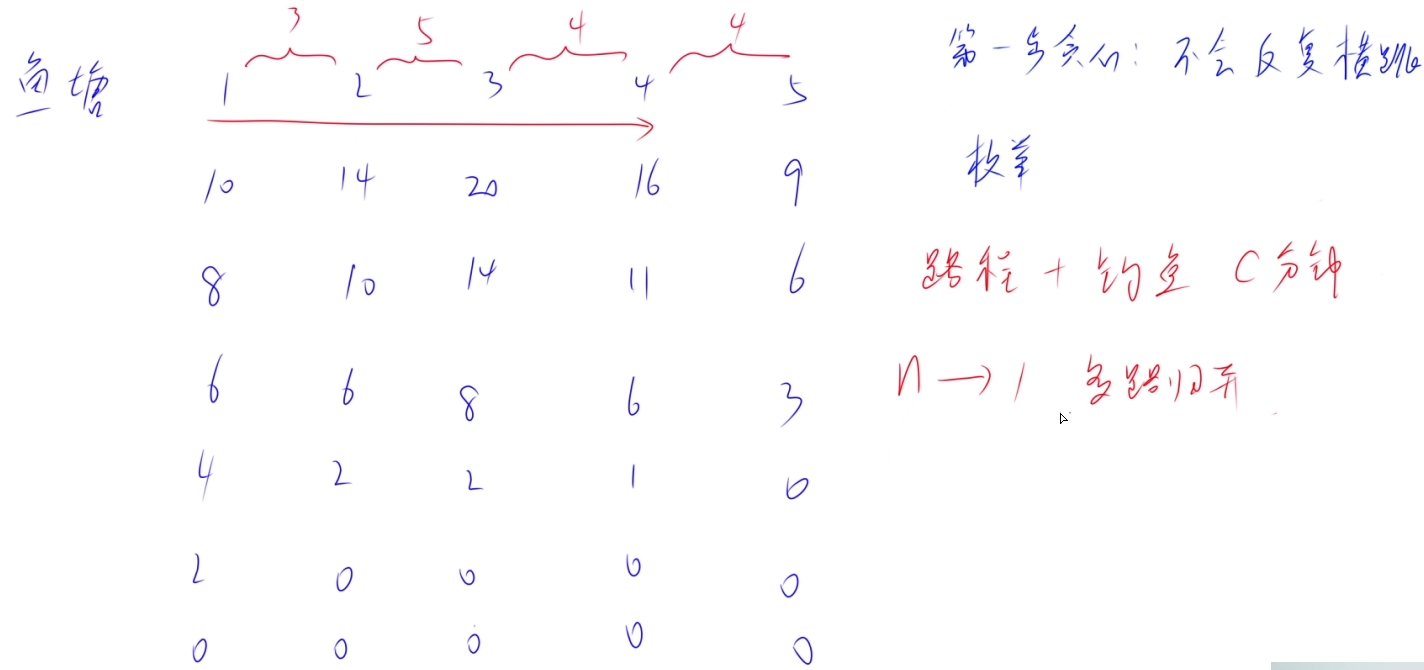题目描述
贪心+多路归并
样例
import java.util.*;
/*
多路归并+贪心
贪心:1.分为拐弯和不拐弯,我们可以发现不拐弯最好。因此得出有n条线路,1至1,1至2 ... 1至n, 共有n条路线
多路归并:每次去找当前时间在哪个鱼塘能钓最多的鱼,依次相加
*/
public class Main {
static final int N = 110;
//a表示第一次钓的鱼数 d表示每分钟减少的鱼数 t表示两个鱼塘的距离 spend表示在这个鱼塘花费了多少时间
static int[] a = new int[N], d = new int[N], t = new int[N], spend = new int[N];
static int n;
//计算当前鱼塘能钓多少鱼
public static int get(int x) {
//要和0取个最大,因为钓鱼不能是负数
return Math.max(0, a[x] - d[x] * spend[x]);
}
public static int work(int x, int s) {
int sum = 0;
//先把spend清空
Arrays.fill(spend, 0);
//找出当前时间最大的钓鱼数量
for (int i = 1; i <= s; i ++) {
int tmp = 1;
for (int j = 1; j <= x; j ++)
//在当前时间哪个鱼塘能钓最多的鱼
if (get(j) > get(tmp))
tmp = j;//赋值给tmp
sum += get(tmp);//sum+=当前时间哪个鱼塘能钓最多的鱼
spend[tmp] ++;//当前时间哪个鱼塘能钓最多的鱼对应的鱼塘花费时间加1
}
return sum;
}
public static void main(String[] args) {
Scanner sc = new Scanner(System.in);
n = sc.nextInt();
for (int i = 1; i <= n; i ++) a[i] = sc.nextInt();
for (int i = 1; i <= n; i ++) d[i] = sc.nextInt();
// t[i]表示走到第i个鱼塘总共花的时间 直接预处理成前缀和
for (int i = 2; i <= n; i ++) t[i] = t[i - 1] + sc.nextInt();
int T = sc.nextInt();
int res = 0;
//枚举每一个路线用T - t[i]来钓鱼的时间,所获得的鱼数.
for (int i = 1; i <= n; i ++) res = Math.max(res, work(i, T - t[i]));
System.out.println(res);
}
}


